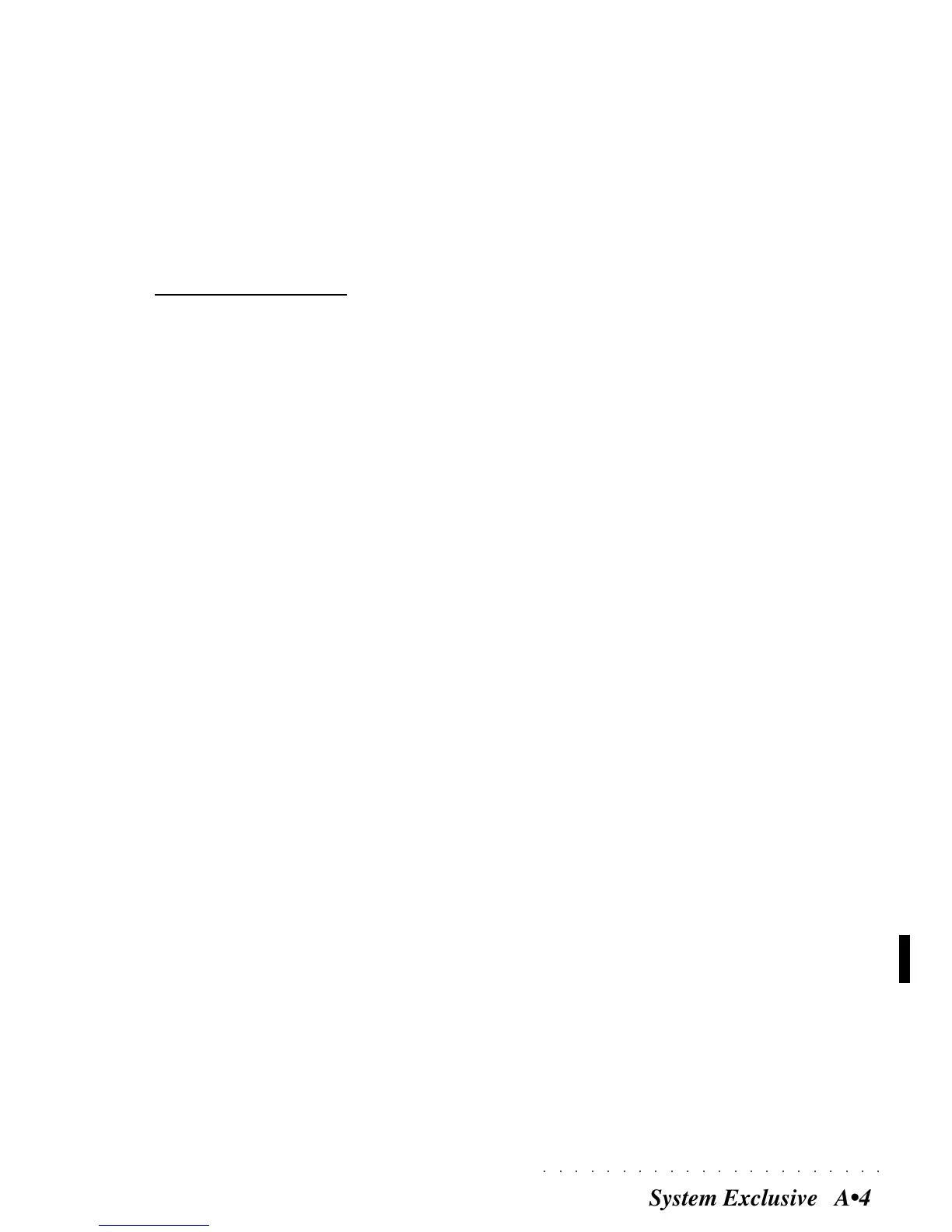○○○○○○○○○○○○○○○○○○○○○○
System Exclusive A•43
Referring to the Resource Request Message command detailed above, setting the value of 0 in the field ss we will obtain all the
resources, while specifying a number greater than 0 we will obtain the transmission of the single resource required.
for each group of rerouces the possible selection values are the following:
Resourse ID Max Select Number
SOUNDS 16
REAL PERFORMANCES 8
STYLE PERFORMANCES 96
USER STYLES 32
SONGS 16
Creation of the Resource File
To create the Resource File it is necessary to write for each single file of a chunk consisting of a desription of the file and of the
data that consistutes the file; the format of each chunk is the following:
bytes rel.addr. name description
4 0 chunck id “data”
4 4 chunck len es.: 30
10
1 8 file type
1 9 file bank
1 10 file perf
1 11 not used
20 12 F_HEAD vedi sotto
len-28 32 < data > byte data
therefore the Resource File can be represented as:
“data” len0 ... < data > for FILE.000
“data” len1 = len0+4 ... < data > for FILE.001
“data” len2= len0+len1+8 ... < data > for FILE.002
“data” len3= len0+len1+len2+12 ... < data > for FILE.003
“data” len_n = S[len(i)] + 4*n ... < data > for FILE.00n
To calculate the totale length of the Resource File it is sufficient sum of the lengths of each file (Li) with the length of each single
header chunk (32 bytes):
Resource File Length = S[Li] + n*32;
The variable F_HEADER present refers to the internal structure of how the file is effectively memorized within the system; to
identify it we refer directly to the stuctures “C” used internally:
union TIME_INF {
struct part {
unsigned short hour : 5;
unsigned short min : 6;
unsigned short sec : 5;
};
ushort time;
}; // total 2 bytes
union DATE_INF {
struct part {
unsigned short year : 7;
unsigned short month : 4;
unsigned short day : 5;
};
ushort date;

